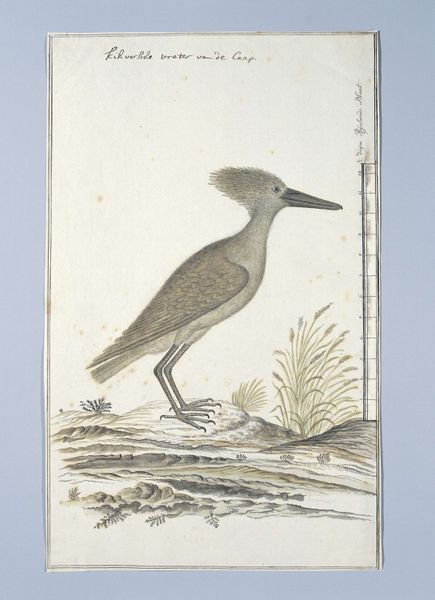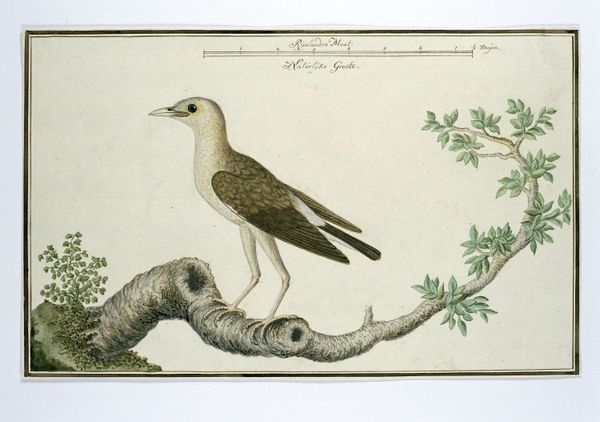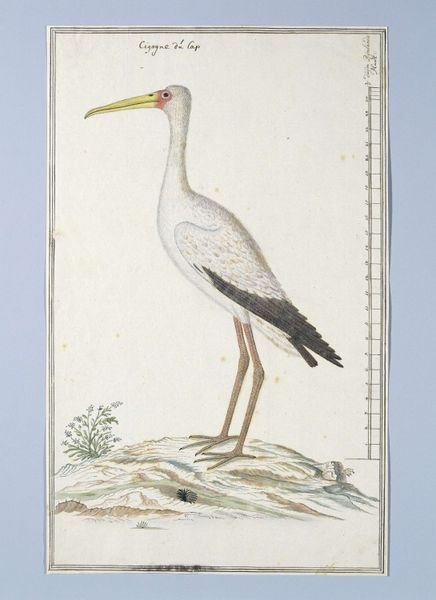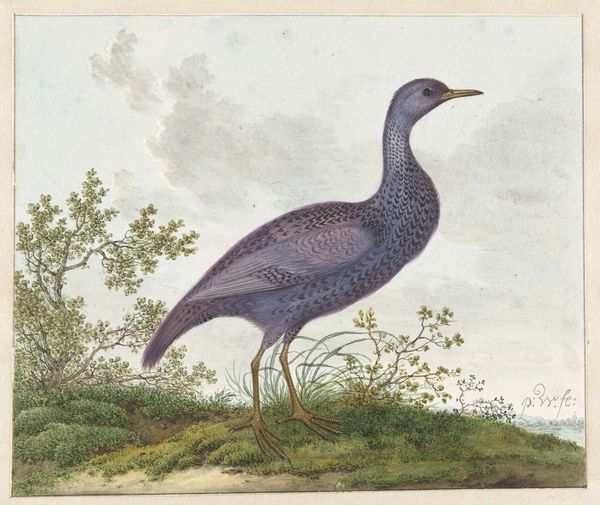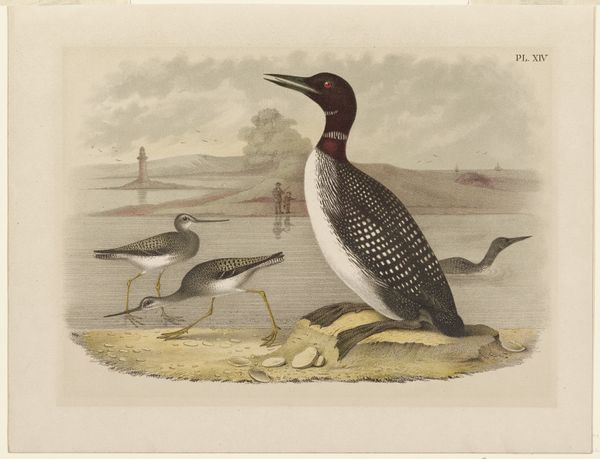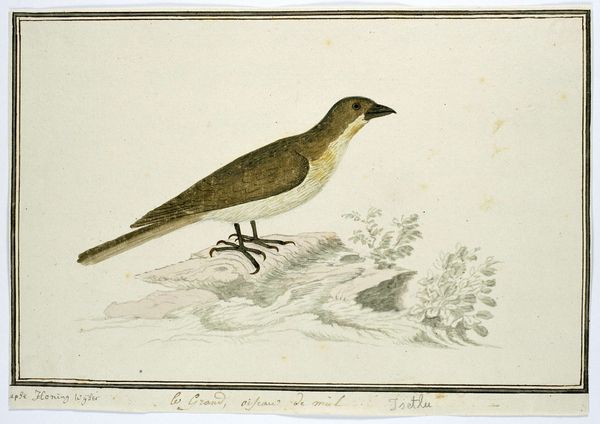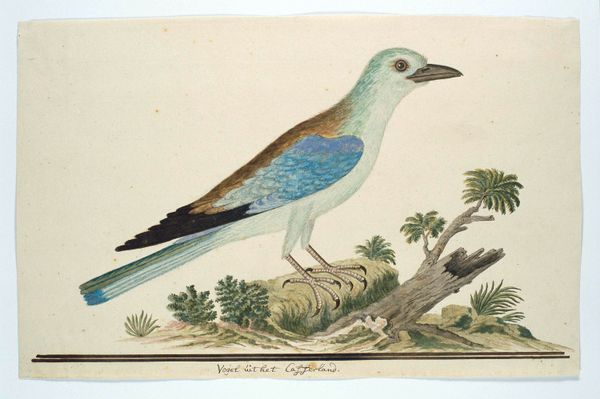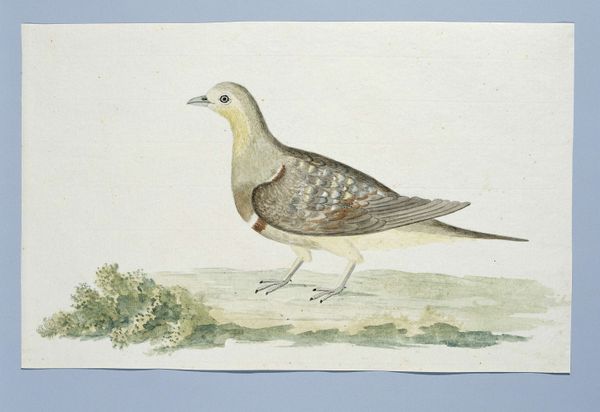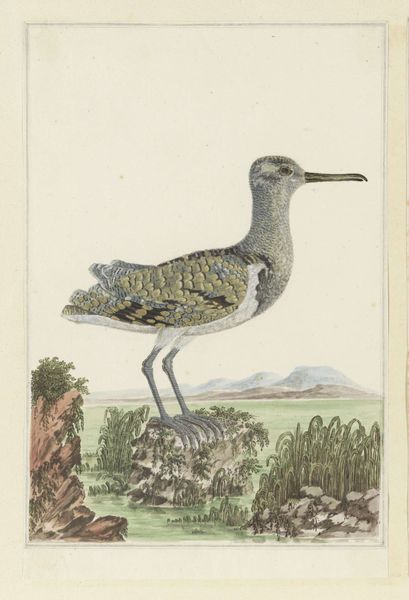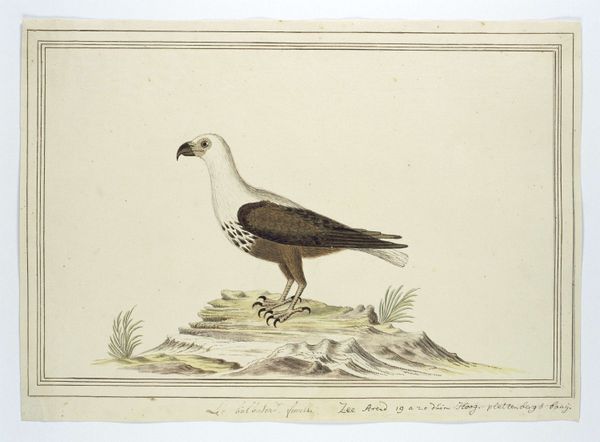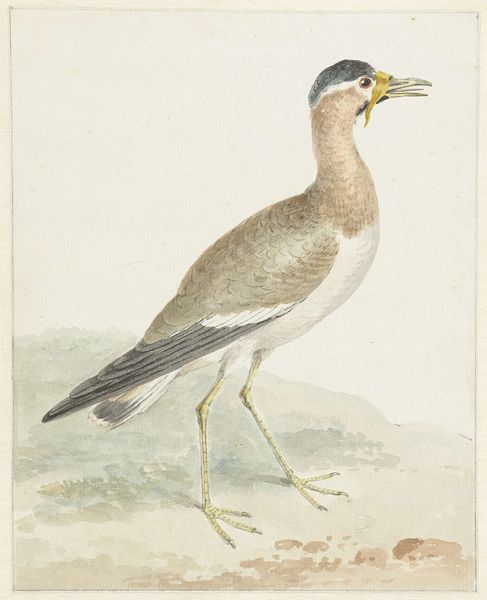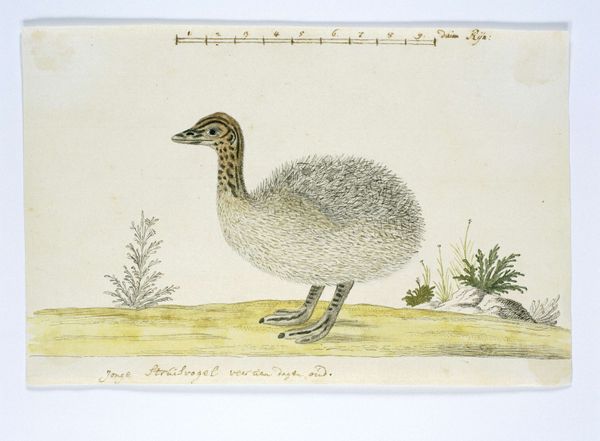
#
toned paper
#
water colours
#
handmade artwork painting
#
oil painting
#
coloured pencil
#
framed image
#
watercolour bleed
#
watercolour illustration
#
remaining negative space
#
watercolor
Dimensions: height 660 mm, width 480 mm, height 278 mm, width 422 mm, height 240 mm, width 395 mm
Copyright: Rijks Museum: Open Domain
This is a drawing of a Morus capensis, or Cape gannet, by Robert Jacob Gordon, completed sometime before his death in 1795. Gordon, a Dutch military officer of Scottish descent, spent much of his career in service to the Dutch East India Company, exploring the interior of Southern Africa. His commissioned explorations had the dual purpose of expanding Dutch knowledge of the land and its resources, and asserting their colonial power. Gordon’s drawings document the landscape, flora, fauna, and indigenous people he encountered, but these depictions often reflect the power dynamics inherent in colonial encounters. How might the artist's role in colonial expansion shape the way we interpret the gannet? Is this an attempt at objective documentation, or does it reflect a desire to categorize and claim ownership over the natural world? Consider the way the gannet is presented: isolated against a neutral backdrop, almost like a specimen pinned for study. In this light, how does the piece evoke the complex interplay between scientific curiosity, colonial ambition, and the representation of the 'other'?
Comments
No comments
Be the first to comment and join the conversation on the ultimate creative platform.
